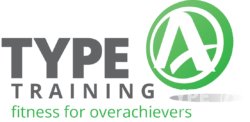Looking to boost your deadlift numbers? The Coan/Philippi program is a 10-week routine designed by legendary powerlifter Ed Coan for Mark Phillipi.
This specialized program has helped lifters add significant weight to their deadlift, with Phillipi himself reportedly increasing his lift from 505 to 540 pounds during the program’s duration.

Unlike training philosophies that minimize deadlifting to increase strength, this program embraces frequent deadlifting as the path to improvement. Each week includes heavy triples followed by speed deadlifts and accessory work like barbell shrugs.
Popular posts:
The program is specifically targeted at intermediate to advanced lifters looking to break through plateaus in their deadlift performance. While not a complete powerlifting program, this deadlift-specific routine has become one of the most popular approaches for those looking to improve this particular lift.
You’ll need to maintain a proper diet with enough protein and a caloric surplus to get the most out of the 10-week grind. If you’re not fueling up, don’t expect the magic to happen.
Key Takeaways
- The Coan/Philippi program is a 10-week specialized deadlift routine designed to add significant weight to your max through weekly heavy and speed deadlift sessions.
- You should expect to train deadlifts once per week with a combination of heavy triples, speed work, and accessory exercises like shrugs for optimal strength development.
- This program works best for intermediate to advanced lifters who maintain adequate nutrition and can integrate the intense deadlift sessions into their broader training approach.
Overview of the Coan/Philippi Deadlift Program

The Coan/Philippi Deadlift Program is a specialized 10-week training routine designed to significantly increase your deadlift maximum. This program combines heavy lifting, speed work, and targeted assistance exercises in a structured progression.
Origins and History
The Coan/Philippi Deadlift Program emerged in the 1990s as a collaboration between powerlifting legend Ed Coan and strength coach Mark Philippi. Ed Coan, widely regarded as the greatest powerlifter of all time, dominated the sport for nearly two decades.
He set over 70 world records across multiple weight classes. Mark Philippi, a former strongman competitor and strength coach, contributed his expertise in programming and periodization to create this systematic approach to deadlift improvement.
Their combined knowledge produced a program that reflected both practical experience and scientific principles. The routine gained popularity through word-of-mouth in hardcore lifting circles before spreading to the mainstream lifting community.
Its reputation grew as lifters consistently reported impressive gains in their deadlift numbers, often adding 30-50 pounds to their max in a single 10-week cycle.
Ed Coan and Mark Philippi’s Contributions
Ed Coan brought unparalleled deadlifting expertise to the program’s development. His personal best of 901 pounds at 220 pounds bodyweight still stands out as one of the most impressive deadlifts in powerlifting history.
Coan’s understanding of technique, progressive loading, and assistance work shaped the program’s core principles. Mark Philippi contributed his knowledge of periodization and programming.
As both a strongman competitor and strength coach, Philippi understood how to structure training to build strength systematically while managing fatigue. Together, they created a program that incorporates:
- Progressive overload with calculated weekly weight increases
- Speed work for explosive power
- Circuit-style assistance exercises for building supporting muscles
- Strategic deloads to manage fatigue
Their approach balances intensity, volume, and recovery—three critical factors that many deadlift programs just can’t juggle well.
Purpose and Target Audience
The Coan/Philippi program is designed specifically for intermediate to advanced lifters looking to break through deadlift plateaus. It’s not for beginners still learning proper technique, since the intensity and volume can be overwhelming for novice lifters.
This program works best if you’ve already built a solid deadlift foundation (typically at least 1.5-2x bodyweight) and understand proper form. The routine consists of heavy deadlifts, speed deadlifts, and assistance work in each session.
You’ll need to commit to a once-weekly deadlift session for 10 consecutive weeks. The program requires dedication to recovery protocols, including enough nutrition, sleep, and stress management.
While primarily used by powerlifters, the routine has also been adopted by strongman competitors, CrossFit athletes, and serious recreational lifters who want to see their deadlift numbers go up.
Structure and Methodology
The Coan/Philippi Deadlift Program follows a precise structure designed to increase deadlift strength over a 10-week period. This program uses strategic loading patterns and assistance exercises to drive significant strength gains.
Pendulum Periodization Framework
The program uses a pendulum periodization approach where volume and intensity fluctuate throughout the 10 weeks. You’ll deadlift once per week, starting with higher volume and moderate intensity in the early weeks.
As you move through the weeks, the intensity ramps up while volume drops. Each session starts with a heavy working set, then you hit speed deadlifts. This structure lets you build both strength and refine your technique.
The program includes heavy triples followed by speed deadlift triples. That combo trains both maximum strength and explosive power, which are huge for a bigger deadlift.
Weekly assistance work complements the main deadlift, targeting weak points in your posterior chain.
Progressive Overload Principles
Progressive overload sits at the heart of the Coan/Philippi method. The weights go up each week in a systematic way, pushing your body to keep adapting.
You start week one at about 80% of your current 1RM. Each week, you add weight according to a formula based on your starting max and your goal max.
The program adds in strategic deloads to avoid burnout. For example, week 4 dials back the workload with just one set of two reps to help you recover.
Assistance exercises follow a similar progression pattern. These include stiff-legged deadlifts, bent-over rows, underhand grip pulldowns, and barbell good mornings, usually done as giant sets with 8 reps for 3 rounds.
Determining Desired 1RM and Progression
The program starts by establishing two numbers: your current 1RM and your desired 1RM after 10 weeks. The difference between these numbers sets your weekly progression rate.
A realistic goal is to increase your deadlift by 20-50 pounds over the 10-week cycle. Mark Philippi reportedly improved his deadlift by 35 pounds using this exact program.
Your weekly weights are calculated as percentages of the difference between your current and goal maxes. This makes your progression logical and keeps you moving toward your target.
The final weeks crank up the intensity, with week 9 getting you ready for the big attempt in week 10. That way, you peak right when it counts.
Weekly Deadlift Routines and Volume
The Coan/Philippi program structures deadlift training around specific intensity and volume patterns over the 10-week cycle. The program balances heavy work sets with speed work and carefully controls overall volume to maximize strength gains without overtaxing recovery.
Work Sets and Repetition Schemes
The Coan/Philippi deadlift routine follows a progressive intensity plan where the main work sets change throughout the 10-week program. Weeks 1-6 focus on higher volume with less rest between sets.
Weeks 7-10 reduce volume but ramp up intensity to help you peak. Your primary work sets begin at around 75% of your goal max and gradually increase to 100% by week 10.
The rep scheme usually looks like this:
| Week | Sets × Reps | % of Goal Max |
|---|---|---|
| 1 | 1×2 | 75% |
| 2 | 1×2 | 80% |
| 3 | 1×2 | 85% |
| 4 | 1×2 | 90% |
| 5-9 | 1×1 | 92-98% |
| 10 | 1×1 | 100% |
You’ll notice the reps drop as the weight climbs, letting your body adapt to heavier loads while keeping fatigue in check.
Speed Deadlifts and Speed Sets
After your heavy work set, the program calls for speed deadlifts to build explosive power and lock in good technique. Speed work matters for developing that initial pull off the floor.
Your speed deadlift sets usually involve 6-8 sets of 1-3 reps at 60-70% of your working max. The goal is to move the weight as explosively as possible while keeping your form tight.
This trains your nervous system to fire muscle fibers efficiently without beating you up. Keep rest short—about 60-90 seconds between sets.
The weight stays light enough for speed, but heavy enough to matter. It builds work capacity and grooves the movement pattern.
Deadlift Volume and Work Capacity
The Coan/Philippi program manages deadlift volume carefully to balance strength gains with recovery. Early weeks (1-6) hit you with higher volume training to build work capacity and reinforce technique.
Volume drops as intensity ramps up in the last weeks. This keeps you from burning out and sets you up for a strong max attempt.
Your weekly deadlift volume might look like this:
- Weeks 1-4: 20-30 total reps (including speed work)
- Weeks 5-7: 15-25 total reps
- Weeks 8-10: 10-15 total reps
This drop in volume matches the jump in intensity, letting your body recover while still adapting to heavier loads. The assistance work backs up your deadlift training by hammering weak points.
Assistance Work and Accessory Exercises
The Coan/Philippi program includes specific accessory exercises that target muscles essential for deadlift performance. These exercises are performed in circuit format for weeks 1-4 and then as straight sets in later weeks, with the volume dropping as you get closer to your peak.
Power Shrugs and Bent Over Rows
Power shrugs build upper back strength, which you need for the lockout phase of your deadlift. To do these, grab a loaded barbell at arm’s length, then shrug your shoulders up and a bit back.
Pick a weight you can move explosively—usually 60-70% of your deadlift max. Bent over rows complement deadlifts by strengthening your lats, rhomboids, and traps.
Set up in a hinged position, similar to the deadlift start, but with more bend at the hips. Pull the bar to your lower ribcage while keeping your torso parallel to the ground.
For both exercises, the Coan/Philippi routine usually calls for 3 sets of 8 reps during the early weeks. Form matters—keep your spine neutral and engage your core throughout each rep.
Good Mornings and Arched Back Good Mornings
Good mornings build up your posterior chain—hamstrings, glutes, and lower back. Set the bar across your upper back, like you would for a squat.
Hinge at your hips, keeping your back flat, until your torso is almost parallel to the ground. Arched back good mornings are a twist on the classic, adding a bit of spinal extension that feels a lot like the lockout of a heavy deadlift.
Keep a gentle arch in your lower back throughout. Start with lighter weights, maybe 30-40% of your squat max, just to nail the movement.
As you move through the program, the assistance work structure changes. In weeks 5-6, you’ll do 3 sets of 5 reps for each exercise before switching, with 90-120 seconds of rest between sets.
Lat Pulldowns and Underhand Pulldowns
Lat pulldowns hit your lats, which help you stay tight during deadlifts. Sit at the pulldown station, grab the bar with a pronated grip a bit wider than shoulder-width, and pull it to your upper chest.
Underhand pulldowns use a palms-facing-you grip, like a chin-up. This version brings your biceps and lower lats into play, building the power to keep the bar close on deadlifts.
Try to control the lowering phase on each rep. The Coan-Philippi program usually calls for 3 sets of 8 reps in the early weeks.
Volume drops as you hit weeks 9-10, when most assistance exercises are dropped. Keep your posture solid—don’t lean back or swing the weight.
Stiff-Leg Deadlifts
Stiff-leg deadlifts, or straight-leg deadlifts, hone in on your hamstrings and lower back. Keep your legs nearly straight, but a slight knee bend saves your joints.
Start with the bar at hip height. Hinge at your hips, keep your back flat, and lower the bar down your legs.
Go until your hamstrings feel a solid stretch, usually just below the knees, then return to the top. Use moderate weights—50-60% of your deadlift max is plenty.
Focus on feeling your hamstrings work, not just moving heavy weight. In the first 4 weeks, do these in a circuit with the other assistance lifts.
Later, you’ll finish all sets of one movement before moving on. This lets you really dial in your effort.
Integration With Other Lifts and Training Approaches
The Coan-Phillipi 10 week deadlift routine takes some planning if you want to fit it in with your other lifts. It’s a focused program, so you’ll want to be smart about recovery.
Squat and Bench Press Considerations
While running Coan-Phillipi, you’ll probably need to drop your squat frequency and intensity a bit. Deadlifts hit your lower back and CNS hard, so cutting squat volume by 20-30% is a safe bet.
For bench, you can stick with your usual schedule. Upper body pressing doesn’t clash much with deadlift recovery.
Try to keep deadlift day at least 72 hours away from heavy squats. Your lower back and posterior chain will thank you.
Example Split:
- Monday: Bench Press + Accessories
- Tuesday: Light Squat
- Wednesday: Rest
- Thursday: Bench Press + Accessories
- Friday: Coan-Phillipi Deadlift
- Saturday/Sunday: Rest or light work
Powerlifting Programs Comparison
Coan-Phillipi is different from full powerlifting programs like 5/3/1 or Stronglifts. Those spread work across all three competition lifts, while this one zeroes in on your deadlift.
Instead of shying away from heavy pulls, this program leans into them. It’s great for peaking, but not something you’d want to run all year.
Use it during a deadlift-focused block, and keep the other lifts at lower volume. Many lifters run it once or twice a year to chase new PRs.
If you’re just starting out, it’s probably better to finish something like Stronglifts first. You’ll want a solid base before tackling this.
Incorporating Hypertrophy and Specificity
You can add hypertrophy work to support your deadlift, especially for back, glutes, hamstrings, and core stability. Keep these sets a couple reps from failure so you don’t burn out.
Upper body hypertrophy is fine to keep at normal volume. It usually doesn’t interfere with deadlift recovery.
Pick accessory lifts that address your weak points. If breaking the floor is tough, try deficit deadlifts or more quad work. For lockout, you might want extra glute and upper back training.
Key accessory movements:
- Romanian deadlifts (hamstrings)
- Rows and pulldowns (back strength)
- Ab wheel rollouts (core stability)
- Hip thrusts (glute power)
Do your hypertrophy work before starting the program, then back off as intensity ramps up.
Practical Tips and Implementation Strategies
Getting the most out of the Coan/Philippi Deadlift Program means paying attention to details. Here’s what you might want to keep in mind to stay healthy and get the best results.
Rest Periods and Recovery
Rest 3-5 minutes between heavy working sets. Your nervous system needs that break before you go again.
For speed deadlifts, 1-2 minutes is usually enough. The assistance exercises should be performed circuit-style in the first 4 weeks, with short rests between moves.
Spread your deadlift days at least 5-7 days apart. This program is set up for once a week for a reason—recovery is huge.
Sleep is a big deal here. Shoot for 7-9 hours a night, since that’s when your body does the real rebuilding.
Eat enough protein (1.6-2g per kg of bodyweight) and get your carbs in around training. It’s not just about lifting—it’s about fueling up, too.
Adapting to Skill Level and Goals
Pick a max that’s actually realistic. The program works best with a goal that’s maybe 25-35 pounds over your current best.
Beginner Adaptation: If you’ve got less than a year of steady training, try:
- Cutting volume by 10-20%
- Aiming for a smaller increase (15-20 pounds)
- Adding an extra day off if you need it
If you’re prepping for a meet, finish the 10-week cycle 1-2 weeks before the competition. That gives you time to peak right.
For general strength, you can run modified cycles back-to-back, but toss in a deload week or two between. That’s usually enough to keep you fresh and making progress.
Common Mistakes to Avoid
Overestimating your target max trips up a lot of lifters. It sets you up for missed lifts later and messes with your progress.
If you’re unsure, it’s smarter to go a bit lighter. You can always surprise yourself on test day.
Don’t ignore the speed deadlifts. They might look easy, but they’re key for building work capacity and keeping your technique sharp when you’re not totally wiped out.
When your form falls apart, that’s your cue—the weight’s probably too heavy. Drop it down rather than gambling with an injury.
Resist the urge to tack on extra deadlift sets during the program. The Coan/Philippi routine covers everything you need. More pulling just gets in the way of recovery.
Keep an eye on your fatigue signals. If your sleep quality tanks, your resting heart rate creeps up, or you feel weirdly sore, maybe take an extra day to recover.











